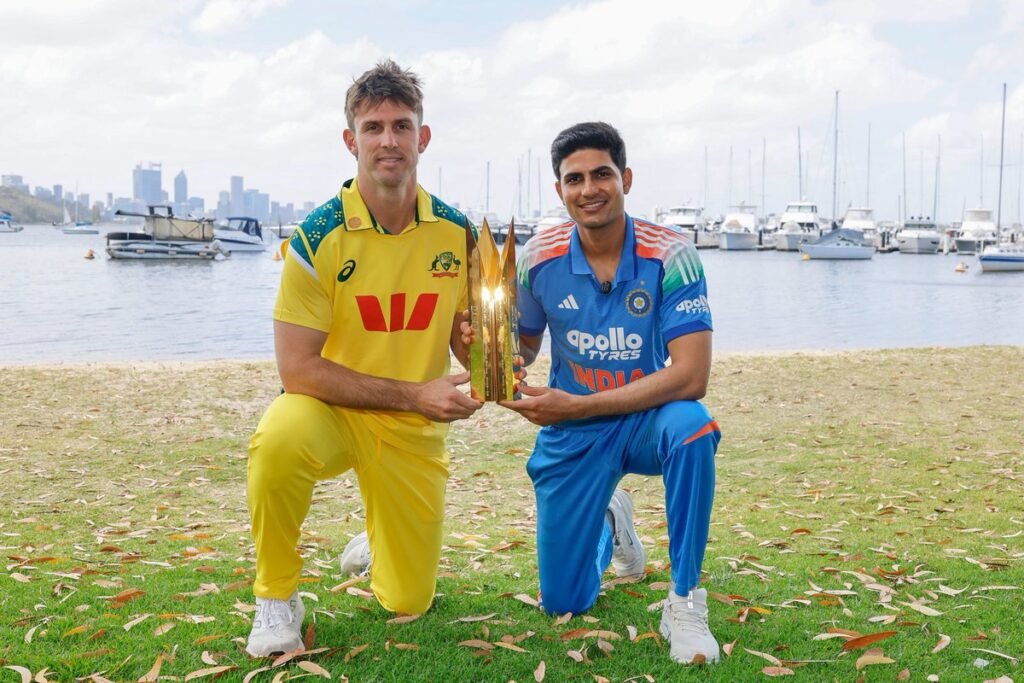
The photographic spectacle between the national captains of India national cricket team and Australia national cricket team is more than a mere ceremonial exercise. In recent major series and tournaments, these captains gather for a formal photoshoot — trophy in hand — that captures both rivalry and respect, and sets the tone for what’s ahead.
One of the most memorable moments came ahead of the 2023 Cricket World Cup final, where Indian skipper Rohit Sharma and Australian counterpart Pat Cummins posed together at the historic Adalaj Stepwell in Gujarat. The backdrop, the trophy, and the media buzz all added weight to the occasion, signalling an event of global magnitude.
More recently, ahead of the 2025 ODI series in Perth, newly appointed Indian captain Shubman Gill and Australian skipper Mitchell Marsh stepped up for their own version of the shoot. The images show both captains kneeling with the series trophy, grinning, cameras clicking, and the rivalry renewed. This shoot not only highlighted the change in Indian leadership but also underlined how the India-Australia rivalry continues to evolve.
Why do we place so much importance on a photoshoot? At first glance, it might appear superficial — a marketing moment, a few good frames for social media. But in the context of cricket, and especially for clashes like India vs Australia, the photoshoot plays several roles. It is symbolic: two men from great cricketing nations facing off. It is psychological: it conveys confidence, readiness, and a touch of swagger. And it is communal: it gives fans a moment to latch on to, a snapshot of the drama about to unfold.
Within the Indian cricketing ecosystem, these shoots also signal change and continuity. When Rohit Sharma stood alongside Pat Cummins, it represented stability for India; when Shubman Gill took the mantle, the images reflected transition and renewal. Both scenarios speak volumes to players, opponents and fans about where the team is headed.
It’s worth noting the setting and styling of these shoots. Traditional or iconic locations (like the ancient step-well in Gujarat) give a cultural flavour to what could otherwise just be a media chore. The attire, the trophy-pose, the handshake — each element is calibrated for maximum visual impact. Broadcasters, social platforms and sponsors all feed off this content, turning it into a moment beyond sport.
From a fan’s perspective, these images become part of the memory bank. A photoshoot before a series becomes the “before” frame: the anticipation, the banner image, the poster-moment. When the matches begin, fans recall the pose, the expressions, and the caricatures of the challenge. For players too, it offers a pause — a moment of mutual respect, however competitive the series might be.
In all, the captain’s photoshoot for India vs Australia is far more than a photo op. It is ritual and reveal, rivalry and respect, marketing and meaning combined. As teams gear up to battle across formats, the images serve as both a reminder of the past and a promise of the contest ahead. Whether the series ends in an epic climax or a one-sided affair, those frames will linger — the captains, the trophy, the pose — a visual chapter in the enduring story of India vs Australia cricket.

